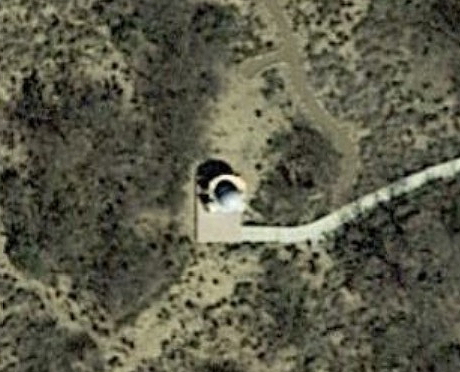Messier Globular Clusters imaging
Posted: 13 September 2017
Thursday, 31 August 2017, was very hazy. I decided to not open the observatory that night even though I had hoped to try again for Asteroid Florence. Instead I continued the process of moving files to my new web server host, which was finally completed Sunday morning, 3 September.
On my previous report I mentioned using SkySafari 5 Pro to GOTO to Asteroid (3122) Florence and not seeing it or imaging it. I reported the problem to Simulation Curriculum and they released an updated TLE for the app. Unfortunately, poor sky conditions kept me from testing it during the closest approach on Friday, 1 September.
Thursday evening, 7 September, I attended the monthly meeting of the Oracle Dark Skies Committee.
Friday afternoon, 8 September, had a last-gasp monsoon season storm come through. Dropped 0.2" rain in about 15 minutes, with a total of 0.49" overnight.
On Saturday, 9 September, I attended the celebration at Kartchner Caverns State Park for it being designated as an IDA "International Dark Sky Park". Kartchner thus became the second IDSP in the Arizona State Parks system, following Oracle State Park, which received its designation in 2014.
Before sunrise on Monday, 11 September, the first clear morning in a long time, one of my webcams captured bright Venus in the eastern sky, but by sunset the sky was cloudy again:


Cloudy skies, that at times had also been hazy (from western US wildfires smoke), continued until Tuesday evening, 12 September.
|
Open: Tuesday, 12 September 2017, 1824 MST Temperature: 81°F |
Session: 1139 Conditions: Mostly clear |
Equipment Used:
12" f/8 LX600 w/StarLock
2" 24mm UWA eyepiece
Camera:
D7200 DSLR
After opening the observatory I SYNCed the observatory clock to WWV.
1836 MST: sunset.
There were two plans for this session: test a new mirror lock for the telescope and to begin imaging Messier Catalog objects to update my Messier Catalog Astrophotography Album. I have gotten way behind with the imaging due to travel and cloudy skies.
1840 MST: LX600 ON, StarLock OFF, High Precision OFF.
1842 MST: viewed Jupiter, low in the western sky, 102X. The moons Io and Ganymede were visible against the still bright sky. 1844 MST: the moon Callisto became visible. 1845 MST: the moon Europa was now visible.
1847 MST: viewed Saturn, 102X. Cassini Division was nicely visible, but no moons were yet visible due to the bright sky.
Then began preparing the D7200 DSLR for prime focus imaging. 1854 MST: Saturn's moon Titan was now visible, 102X.
I began doing extensive tests of a potential new mirror lock for the 12" LX600. I will report on the lock once tests are completed.
2003 MST: StarLock ON. Began prime focus imaging of some globular clusters. I used the Right Angle Viewfinder on the DSLR to assist with framing.
M22, 20 seconds, ISO 5000, White Balance 3570K

M28, 30 seconds, ISO 5000, White Balance 3570K

M54, 30 seconds, ISO 6400, White Balance 3570K

M69, 30 seconds, ISO 5000, White Balance 3570K

M70, 30 seconds, ISO 5000, White Balance 3570K

2026 MST: StarLock OFF. Ended imaging.
Using 102X I viewed the five globular clusters that I imaged: M70, M69, M54, M28, and M22.
The last object viewed this night was M16 (Eagle Nebula), 102X.
2051 MST: LX600 OFF. It had been nice to be back in the observatory again.
|
Close: Tuesday, 12 September 2017, 2100 MST Temperature: 79°F |
Session Length: 2h 36m Conditions: Mostly clear |
I finally posted my full report on the Total Solar Eclipse. I have also posted a revised Totality photo merging three images to show the corona, prominences, and Earthshine:

Click/tap on image for larger version
As I continue to edit my Tolar Solar Eclipse photos I will post them on my Sun Astrophotography Album.
I recently found a new satellite image that shows my SkyShed POD XL5 and PZT:

Comments are welcome using Email. Twitter users can use the button below to tweet this report to your followers. Thanks.
Cassiopeia Observatory Home Page
Copyright ©2017 Michael L. Weasner / mweasner@me.com
URL = http://www.weasner.com/co/Reports/2017/09/13/index.html
